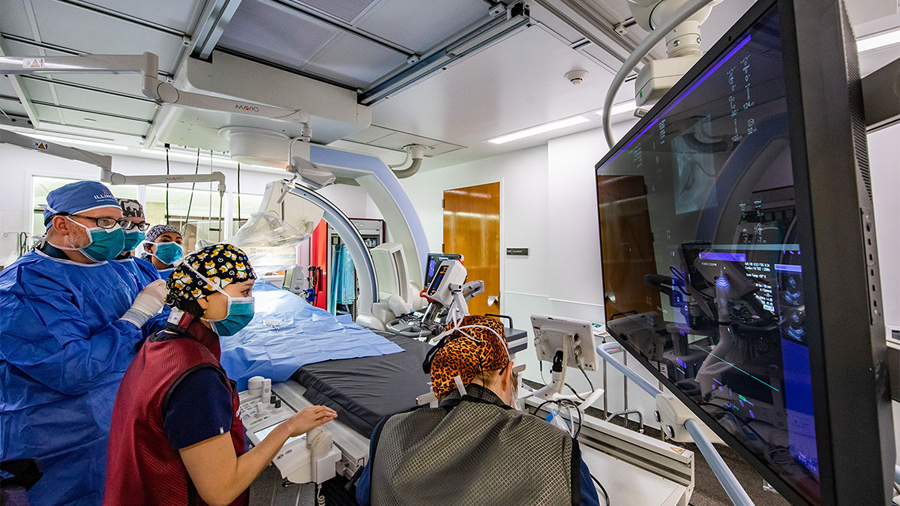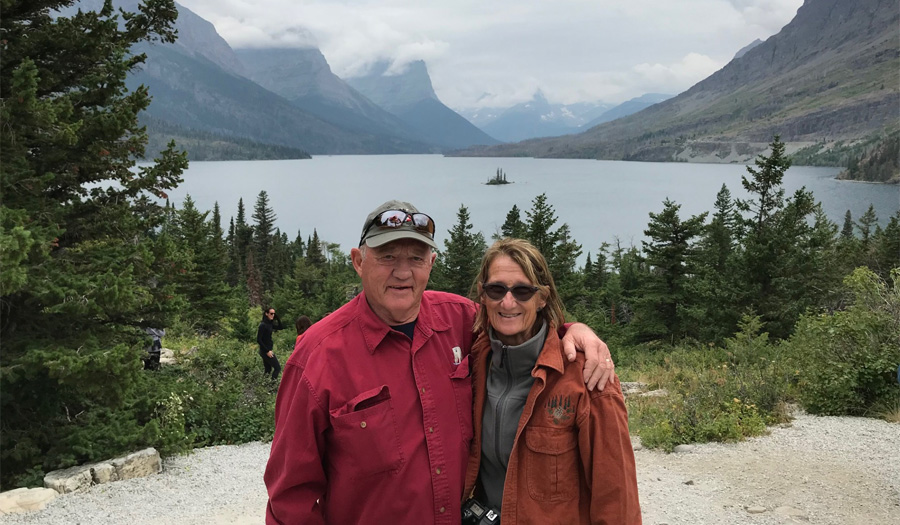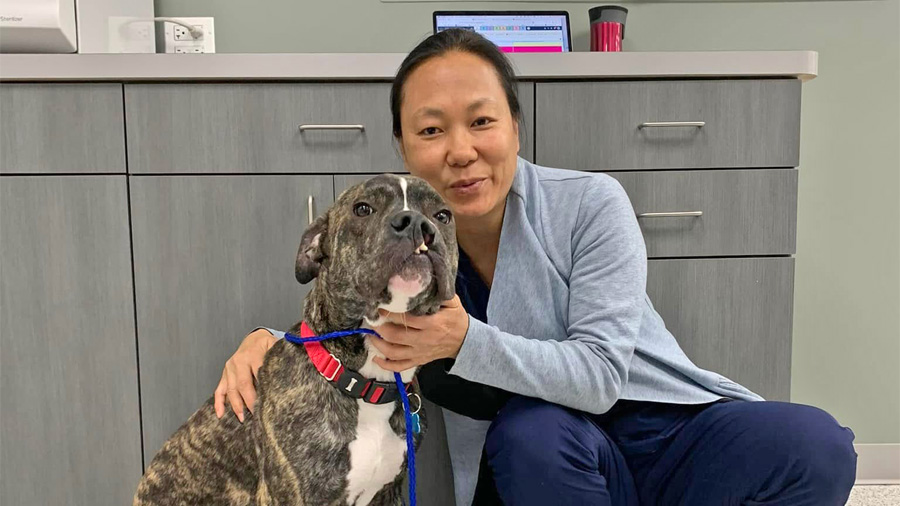His story is ‘authentic and backed by experience’
When it comes to dogs, University of Illinois professor Dr. Joseph Martocchio is a breed apart. And his love of a particular breed—the massive, majestic Newfoundland—inspired his admiration for the College of Veterinary Medicine and his desire to sit on the board of the college’s ambitious capital campaign.
“My partner Brad Olson and I have adopted rescues, mainly Newfoundlands, for the last decade,” says Martocchio, a veteran educator who has served as associate dean for academic affairs and director of degree programs in the U of I School of Labor and Employee Relations. “I would say probably 12 in all.
Being able to help create and contribute to the story being presented to prospective donors, having it be authentic and backed by experience. That’s why I want to serve, and why I look forward to working with the board.
Prof. Joseph Martocchio
“It’s a breed I fell in love with when I first saw them at a dog show while I was in graduate school at Michigan State. I got to interact with some of them, and I just fell in love with their sweetness and their intelligence. They’re just magnificent.”
True ‘Friends in Need’
When you’re passionate about caring for rescue dogs—especially ones that may weigh 125 pounds or more—you can become very familiar with the quality of service provided by the college’s Veterinary Teaching Hospital. Not only has Martocchio taken a hands-on involvement with the hospital, serving as a volunteer in its hydrotherapy department when his schedule permits, but he also established a fund with Olson to help pet owners with limited funds afford treatment for their animals. It’s called A Friend in Need Animal Care Fund.
“We asked the people in advancement to have this as a showcase link on their website,” he says. “It’s not about advancing our names—in fact, our names don’t appear—but we carefully selected the title because we think it will draw people who want to give and are looking at options on the website. Because, how can you not help a friend in need?”
This friend of the college and its Veterinary Teaching Hospital is excited to lend his expertise to the campaign board. “I was thrilled to be asked,” Martocchio says. “Because I believe what I can bring to the table is an understanding of the donor’s perspective, about what makes a segment of the population want to contribute to animal welfare, and to translate all the experiences I’ve had at the hospital. Being able to help create and contribute to the story being presented to prospective donors, having it be authentic and backed by experience. That’s why I want to serve, and why I look forward to working with the board.”
‘Consistently Excellent’ Care
As he and Olson have rescued a succession of Newfies, “We’ve experienced the outstanding care provided by the people at the Veterinary Teaching Hospital through many years,” says Martocchio. “Consistently excellent, not only in terms of their ability to manage really difficult health issues, but also the way in which they deal with clients as human beings.
“It’s a teaching hospital, so we have residents and students who are there to learn, but at the same time they recognize they’re dealing with people, and that these animals are family members.”
At the same time, he believes, the U of I hospital dispels at least one widely held misconception.
“This is a place that doesn’t sacrifice the welfare of an animal for undertaking the most aggressive treatment,” Martocchio says. “They actually consider the welfare of both the animal and the owners, and that needs to be conveyed because oftentimes when you hear the words ‘teaching hospital,’ you think ‘experimentation.’
‘Not-for-Profit Entity’
“And then, even when people can afford to pay, services can be very expensive. But at the teaching hospital, this is a not-for-profit entity. All the money goes for student education, to maintain the hospital’s superior quality through purchasing new equipment and buying supplies, investing in pet owner education. So nobody is profiting financially, and that’s an important point to be made during the campaign.”
Martocchio is investing in the future health of his current brood: a seven-year-old Landseer Newfoundland named Uno, surrendered by an elderly couple who no longer could care for him; KC, two, whose numerous allergies made it too expensive for her previous owners to keep her; and the outlier, a nine-year-old Bernese mountain dog named Mazzy (featured in the photo above with Martocchio), whose owner passed away.
In most cases, Martocchio says, their dogs’ previous owners are “good people who realized that, rather than keep their pets and make them suffer, that they were doing the right thing for them.”
By Jim McFarlin

![[Prof. Joseph Martocchio and his dog Mazzy]](https://vetmed.illinois.edu/wp-content/uploads/2021/04/joecrop1.jpg)


